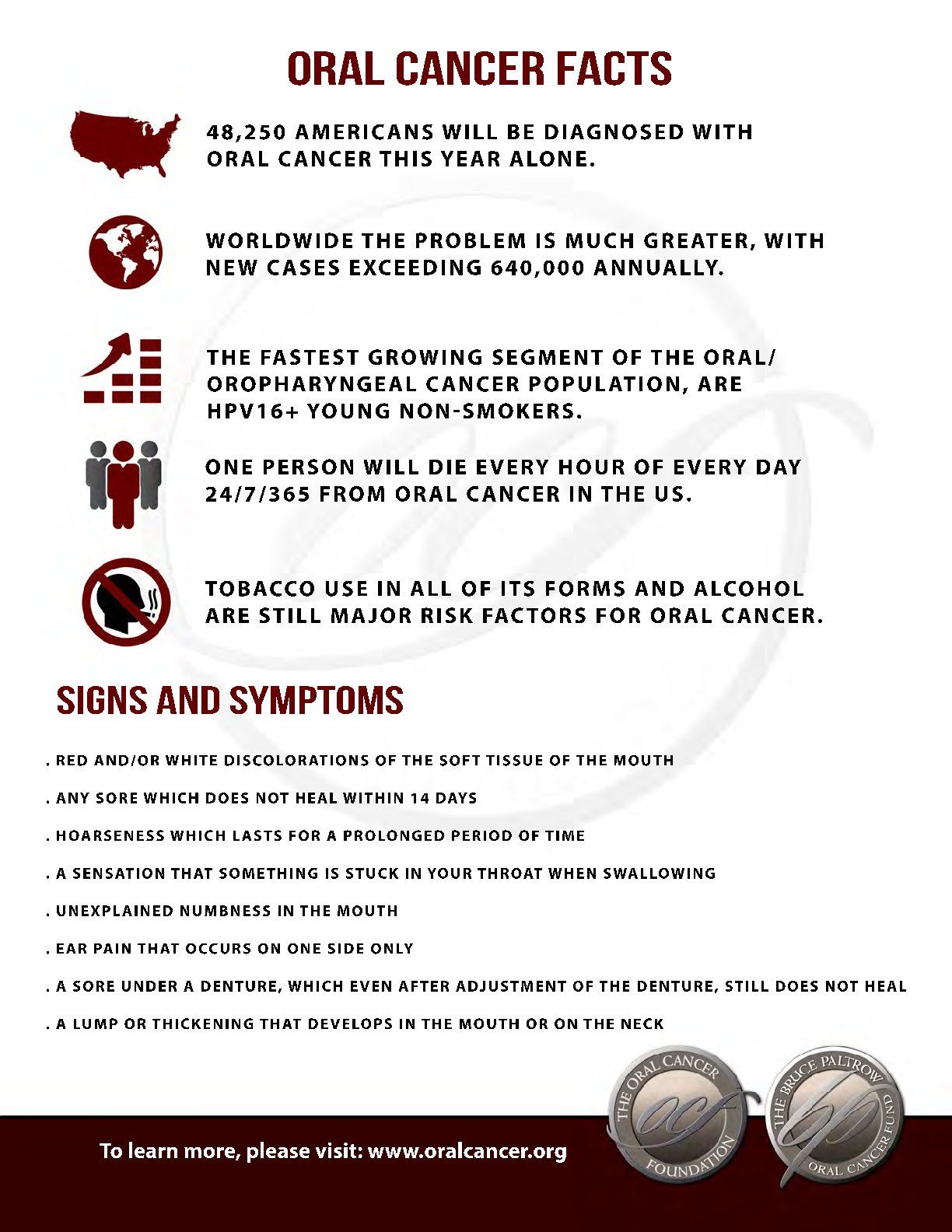 Every hour, 24-hours-a-day, 365-days-a-year, someone dies of oral or oropharyngeal cancer (cancer of the mouth and upper throat). Yet, if oral cancer is detected and treated early, treatment-related health problems are reduced and survival rates may increase.
Every hour, 24-hours-a-day, 365-days-a-year, someone dies of oral or oropharyngeal cancer (cancer of the mouth and upper throat). Yet, if oral cancer is detected and treated early, treatment-related health problems are reduced and survival rates may increase.
This April, we observe the 17th Annual Oral Cancer Awareness Month and join the Oral Cancer Foundation in its campaign to raise awareness of oral cancer screenings and the importance of early detection.
Regular oral cancer examinations performed by your oral health professional remain the best method for detecting oral cancer in its early stages. Be mindful of symptoms In between dental visits, the public is encouraged to regularly check for signs and symptoms, and see a dental professional if they do not improve or disappear after two-three weeks:
- a sore, or soreness or irritation that doesn't go away
- red or white patches, or pain, tenderness, or numbness in mouth or lips
- lumps, thickening tissues, rough spots, crusty or eroded areas
- difficulty chewing, swallowing, speaking or moving your jaw or tongue
- a change in the way your teeth fit together when you close your mouth
- a painless lump or swelling felt in the neck
- sore throat, difficulty swallowing, or pain when swallowing
- swelling of the tonsillar areas at the back of the mouth
Risk Factors
Research has identified a number of factors that may contribute to the development of oral and oropharyngeal cancers. Historically, those at an especially high risk of developing oral cancer have been heavy drinkers and smokers older than age 50, but today the cancer also is occurring more frequently in younger, nonsmoking people due to HPV, the virus most commonly associated with cervical cancer.
The sexually transmitted human papillomavirus 16 (HPV) is related to the increasing incidence of oropharyngeal cancer (most commonly involving lymphoid tissue occurring in the tonsils or the base of the tongue) in a younger, non-smoking population composed of males four to one over females.
If you have never had an oral cancer examination, there is no better time to schedule one than during Oral Cancer Awareness Month in April. When you do, be sure to ask that this examination be made a routine part of all of your future dental check-ups. For a list of local dental professionals who are participating in this year's event by offering free oral cancer screenings, visit the Oral Cancer Foundation's Web site. For more information about oral cancer and its diagnosis and treatment, visit the following organizations' Web sites. American Academy of Oral Medicine (aaom.com) American Academy of Periodontology (perio.org) American Association of Oral and Maxillofacial Surgeons (MyOMS.org) American Dental Association (ada.org) American Dental Hygienists' Association (adha.org) The Oral Cancer Foundation (oralcancer.org)
April is Oral Cancer Awareness Month